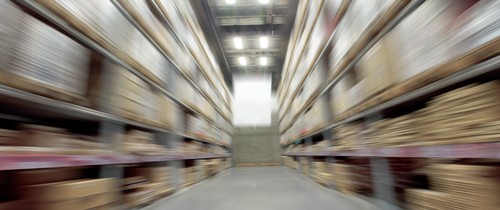Guest Commentary: The Evolving WCS
by Tom Lehmkuhl
I am often asked by prospective and current customers to describe what a Warehouse Control System (WCS) is and what it does. Depending on the situation, I find an analogy helps.
The one I use most often is that of the computer in a car. For many, I talk about that period when we transitioned from distributer caps and points to electronic ignition: the transition from being in control to turning it over to software and some piece of silicon. Those times were challenging because it seemed that one device instantly became responsible for every problem you encountered with your car – at least that’s what the service tech told you. And because it was there, you lost control.
The next evolutionary stage occurred when stability became the norm for that device – an embedded computer. You came to trust it, and many liked it because you no longer had to “tweak and twiddle” to keep the car running. And so, it was like that for the first stage of the evolving WCS. The system was put in, and after some customization and tuning, it became productive. So much so, that it was never to be touched again; after all, the computer in your car was never changed. If it’s not broke, don’t fix it; because if you try, it will definitely break.
So let’s fast-forward a bit. Today, the number of computers (or control devices) in your car can number between five and 20, or even more. They perform in areas you often don’t even think about, including: your driving environment; temperature control; noise-canceling acoustics; speed control; collision avoidance; detection; and adaptive response. Oh, and let’s not forget engines that adapt to your fuel choice for best economy and performance, those incredible anti-lock brakes, and what would we do without Bluetooth?
The common thread is that technology is advancing in ways that change and enhance how and what we do, making us all “multitaskers” so we are more productive and valued. The same is true for advancements in the WCS space. If we focus on the need for an adaptive and responsive distribution operation (your environment) and what that would do for the business, we can begin to see how this analogy plays out.
Some needs include the introduction of a new piece of automation, changes in customer requirements, new products and new ways to package and ship them, inclusion of direct to consumer in an operation intended for store fulfillment, etc. These are all characteristics of a fast-paced industry needing to evolve rapidly.
To complete the analogy, we need to recognize that the WCS is in exactly the same position as the computer in your car. It can control the behavior of the operation. Just like the car computer that cannot determine where you should go, the WCS cannot tell you what you should distribute. But they both have the ability to control the “how” it gets done, because that is what they are built to do.
The new breed of WCS (i.e., WCS 2.0) provides many of the adaptive controls needed for today’s changes. We are well beyond the question of stability. We are now addressing the questions of greater intelligence and decision making (not just decision support) as a result of high-speed chipsets and distributed processing. Visibility will shortly become analogous to the heads-up displays in that new car such that it can bring all types of data together into easily understood information for faster and better decisions.
Stay tuned: that car of yours along with that WCS have a lot more evolving to do.
Tom Lehmkuhl is VP, Executive Consultant with MHI Member FORTE





